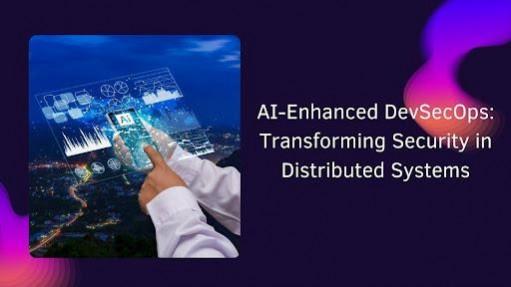
In an era where cyber threats continue to escalate, the integration of artificial intelligence (AI) into DevSecOps is revolutionizing security frameworks for distributed systems. Kalyan Chakravarthy Thatikonda explores in his latest research how AI-driven solutions significantly enhance vulnerability management, reshaping the security landscape across industries.
The Growing Complexity of Distributed Systems
The rapid adoption of cloud-native architectures and microservices has expanded attack surfaces, creating an unprecedented challenge for cybersecurity teams. Traditional security measures struggle to keep up with the increasing volume and complexity of vulnerabilities. AI-powered DevSecOps solutions are now stepping in to automate threat detection, prioritize vulnerabilities, and streamline remediation processes, ensuring proactive security management.
Precision in Vulnerability Prioritization
AI significantly enhances vulnerability prioritization in DevSecOps by improving accuracy and efficiency. Studies show that AI-driven security models achieve a 96% correlation between prioritized vulnerabilities and real-world exploits, far surpassing the 59% accuracy of conventional methods. This allows organizations to focus on the most critical threats, minimizing the window attackers have to exploit security gaps. By leveraging AI's predictive capabilities, security teams can optimize their response strategies, reduce false positives, and allocate resources more effectively, strengthening overall cybersecurity resilience.
Accelerated Remediation Through Automation
AI-driven automation is revolutionizing vulnerability remediation, enabling faster and more efficient security responses. Organizations using AI-enhanced workflows resolve critical vulnerabilities 3.7 times faster than traditional methods. Additionally, AI-guided patch management cuts exposure time by 46%, significantly reducing attack windows. By automating detection and response, AI accelerates remediation, strengthening cybersecurity defenses and minimizing risk in an increasingly complex threat landscape.
Shift-Left Security: Detecting Vulnerabilities Early
Incorporating AI-powered security measures early in the software development lifecycle, a strategy known as 'shift-left security,' has demonstrated remarkable efficiency. AI-enhanced code scanning detects 81% of security vulnerabilities before code review, compared to 34% identified using standard static analysis tools. This early detection reduces remediation costs by 93% and ensures that security flaws do not reach production environments.
Contextual Analysis for Smarter Security Decisions
Unlike conventional security tools, AI models incorporate contextual factors such as asset criticality, network segmentation, and real-time threat intelligence to improve vulnerability assessment accuracy. AI-powered contextual analysis has been shown to reduce false positive vulnerability reports by 59%, while increasing the identification of genuinely exploitable threats by 43%, allowing security teams to focus their efforts more effectively.
Predictive Vulnerability Management: Staying Ahead of Threats
AI's predictive capabilities allow security teams to anticipate potential exploits before they occur. Predictive analytics models can identify high-risk vulnerabilities with 83% accuracy, enabling organizations to deploy preemptive defenses and reduce successful exploits by 51%. This shift from reactive to proactive security significantly strengthens an organization's overall defense posture.
The Human Factor: Bridging the Cybersecurity Skills Gap
With an estimated 3.5 million cybersecurity positions remaining unfilled globally, AI-driven DevSecOps solutions help optimize human resources. AI-powered vulnerability management increases the number of vulnerabilities handled per security analyst by 312%, enabling teams to manage larger workloads without compromising effectiveness. This efficiency allows organizations to reallocate 43% of security resources to more strategic initiatives.
The Future of AI in DevSecOps
As organizations continue to embrace AI-enhanced DevSecOps, the focus will shift toward refining predictive models, enhancing automation, and integrating AI with regulatory compliance frameworks. AI-driven security is not merely an enhancement it is a fundamental transformation in how vulnerabilities are managed in an increasingly complex digital world.
In conclusion, Kalyan Chakravarthy Thatikonda's research highlights the pivotal role of AI in enhancing security across industries, providing a strategic roadmap for the future of cybersecurity. By leveraging AI-driven DevSecOps, organizations can proactively address emerging threats and fortify their defenses, ensuring resilience in the face of ongoing digital transformation.

















